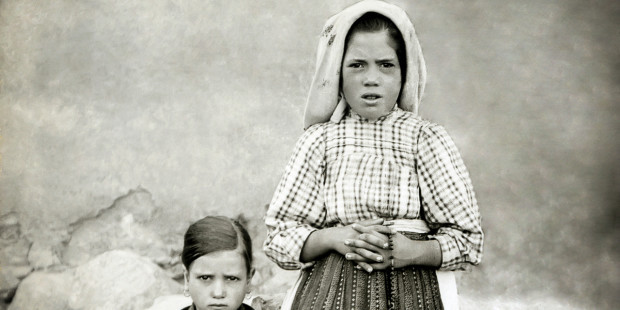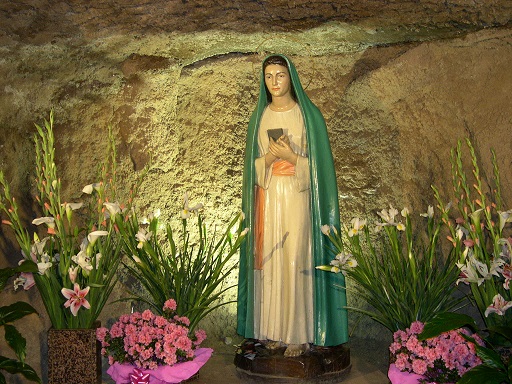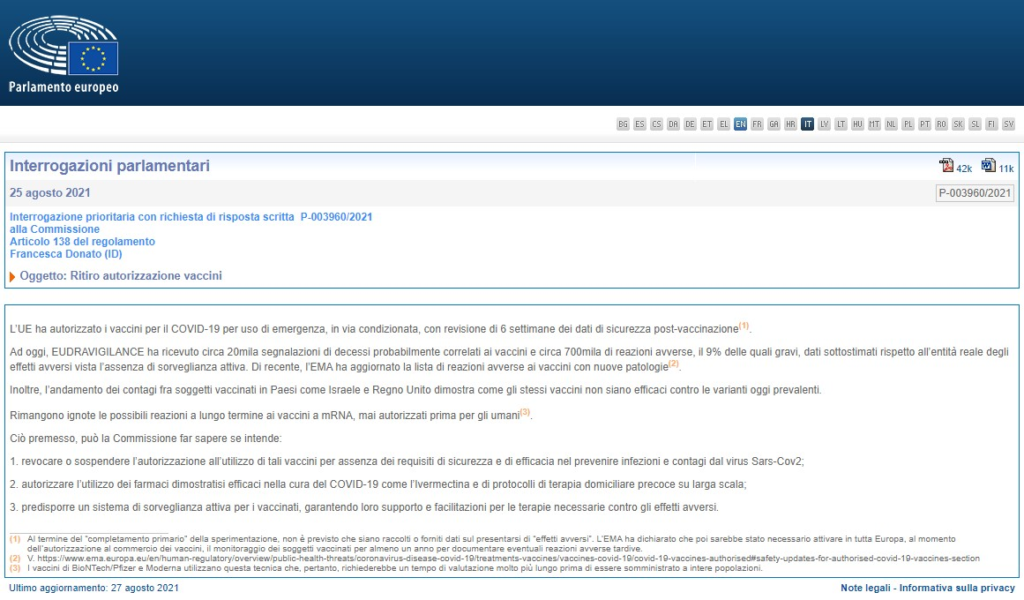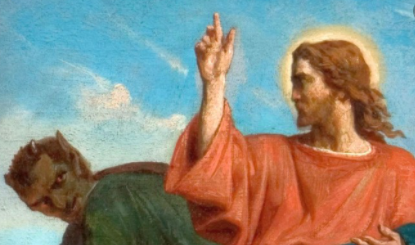



“Il messaggio [Sr.] Lucia non lo ha completo [completato], per completarlo deve leggere quello del 12 aprile 1947 (5) e i successivi (6) che indegnamente ho ricevuti. E’ grande responsabilita’ il vedere e ricevere dal Cielo editti per il mondo che perira’.” (7)
“La Vergine mi ha fatto capire che il messaggio di Fatima continua alle Tre Fontane“.
______________________
(1) “Il Veggente. Il segreto delle Tre Fontane“, di Saverio Gaeta, TEA Tascabili Editori Associati, Adriano Salani Editore, Milano, ristampa 2020.
(2) Vedasi al riguardo: UNA ERESIA Neo-CATECUMINALE (NEMMENO NASCOSTA) CHE RITORNA, Max Tex, 14 Settembre 2021, https://www.proselitismodellascienza.it/2021/09/14/una-eresia-neo-catecuminale-nemmeno-nascosta/
(3) ibid. pag.72 e segg.
(4) la BVM.
(5) della Vergine della Rivelazione (la BVM) a Bruno Cornacchiola.
(6) sempre a Bruno Cornacchiola (ved.(1)).
(7) ibid. Ref.(2), pag.75.

SS. Cornelii Papæ et Cypriani Episcopi, Martyrum.
Oggi celebriamo un gruppo di martiri tra cui Cornelio e Cipriano. Abbiamo la chiamata al martirio. Tuttavia non tutti hanno questa vocazione. Ma alcune anime elette la possiedono.
Cornelio fu il ventunesimo papa. I suoi seguaci furono perseguitati e visse in un tempo di grandi conflitti della chiesa in cui venne eletto un antipapa.
Cipriano vescovo di Cartagine cinque anni dopo la morte di Cornelio (a Civitavecchia) venne a sua volta martirizzato.
Ma Gesu’ governa la chiesa attraverso il suo vero e unico vicario.
Benedetto XVI assomiglia molto alla figura di Cornelio, costretto alle dimissioni. Ma non sono percio’ dimissioni vere. Dobbiamo quindi essere vicini al nostro vero papa, sostenerlo soprattutto con la preghiera.
Questa e’ la cosa piu’ importante che possiamo fare. Preghiamo dunque Cristo perche’ ci dia forza e coraggio per superare gli ostacoli che si parano davanti a noi!
Sia lodato Gesu Cristo!
____________________
(*) Questo commento e’ scritto in tempo reale durante l’omelia. Mi scuso per l’eventuale misinterpretazione delle parole di Don Enrico.
SS. Cornelii Papæ et Cypriani Episcopi, Martyrum.
Today we celebrate a group of martyrs including Cornelius and Cyprian. We have the call to martyrdom. However not everyone has this vocation.
Cornelius was the twenty-first pope. His followers were persecuted and he lived in a time of great church strife when an antipope was elected.
Cyprian bishop of Carthage five years after the death of Cornelio (in Civitavecchia) was himself martyred.
But Jesus governs the church through his true and only vicar.
Benedict XVI is very similar to the figure of Cornelio, forced to resign. But they are not therefore true resignations.
We must therefore be close to our true pope, support him above all with prayer. This is the most important thing we can do.
Let us therefore pray to Christ to give us strength and courage to overcome the obstacles that stand before us!
Praised be Jesus Christ!
________________
(**) This document is written in real time while the homily is taking place. I escuse myself for any possible misinterpretation of the words by Don Enrico.

Evangelium Luc 21:9-19
In illo témpore: Dixit Iesus discípulis suis: Cum audieritis proelia et seditiónes, nolíte terréri: opórtet primum hæc fíeri, sed nondum statim finis. Tunc dicébat illis: Surget gens contra gentem, et regnum advérsus regnum. Et terræmótus magni erunt per loca, et pestiléntiæ, et fames, terrorésque de coelo, et signa magna erunt. Sed ante hæc ómnia iniícient vobis manus suas, et persequéntur tradéntes in synagógas et custódias, trahéntes ad reges et praesides propter nomen meum: contínget autem vobis in testimónium. Pónite ergo in córdibus vestris non præmeditári, quemádmodum respondeátis. Ego enim dabo vobis os et sapiéntiam, cui non potérunt resístere et contradícere omnes adversárii vestri. Tradémini autem a paréntibus, et frátribus, et cognátis, et amícis, et morte affícient ex vobis: et éritis ódio ómnibus propter nomen meum: et capíllus de cápite vestro non períbit. In patiéntia vestra possidébitis ánimas vestras.
Gospel Luke 21:9-19
At that time, Jesus said to His disciples, When you hear of wars and insurrections, do not be terrified; these things must first come to pass, but the end will not be at once. Then He said to them, Nation will rise against nation, and kingdom against kingdom; and there will be great earthquakes in various places, and pestilences and famines, and there will be terrors and great signs from heaven. But before all these things they will arrest you and persecute you, delivering you up to the synagogues and prisons, dragging you before kings and governors for My name’s sake. It shall lead to your bearing witness. Resolve therefore in your hearts not to meditate beforehand how you are to make your defense. For I Myself will give you utterance and wisdom, which all your adversaries will not be able to resist or gainsay. But you will be delivered up by your parents and brothers and relatives and friends; and some of you they will put to death. And you will be hated by all for My name’s sake; yet not a hair of your head shall perish. By your patience you will win your souls.
SS. Cornelii Papæ et Cypriani Episcopi, Martyrum.
Oggi celebriamo un gruppo di martiri tra cui Cornelio e Cipriano. Abbiamo la chiamata al martirio. Tuttavia non tutti hanno questa vocazione. Ma alcune anime elette la possiedono.
Cornelio fu il ventunesimo papa. I suoi seguaci furono perseguitati e visse in un tempo di grandi conflitti della chiesa in cui venne eletto un antipapa.
Cipriano vescovo di Cartagine cinque anni dopo la morte di Cornelio (a Civitavecchia) venne a sua volta martirizzato.
Ma Gesu’ governa la chiesa attraverso il suo vero e unico vicario.
Benedetto XVI assomiglia molto alla figura di Cornelio, costretto alle dimissioni. Ma non sono percio’ dimissioni vere. Dobbiamo quindi essere vicini al nostro vero papa, sostenerlo soprattutto con la preghiera.
Questa e’ la cosa piu’ importante che possiamo fare. Preghiamo dunque Cristo perche’ ci dia forza e coraggio per superare gli ostacoli che si parano davanti a noi!
Sia lodato Gesu Cristo!
____________________
(*) Questo commento e’ scritto in tempo reale durante l’omelia. Mi scuso per l’eventuale misinterpretazione delle parole di Don Enrico.
SS. Cornelii Papæ et Cypriani Episcopi, Martyrum.
Today we celebrate a group of martyrs including Cornelius and Cyprian. We have the call to martyrdom. However not everyone has this vocation.
Cornelius was the twenty-first pope. His followers were persecuted and he lived in a time of great church strife when an antipope was elected.
Cyprian bishop of Carthage five years after the death of Cornelio (in Civitavecchia) was himself martyred.
But Jesus governs the church through his true and only vicar.
Benedict XVI is very similar to the figure of Cornelio, forced to resign. But they are not therefore true resignations.
We must therefore be close to our true pope, support him above all with prayer. This is the most important thing we can do.
Let us therefore pray to Christ to give us strength and courage to overcome the obstacles that stand before us!
Praised be Jesus Christ!
________________
(**) This document is written in real time while the homily is taking place. I escuse myself for any possible misinterpretation of the words by Don Enrico.


E’ la festivita’ dei Sette Dolori della Beata Vergine Maria (BVM). Abbiamo udito l’inno dello Stabat Mater attribuito a Iacopone da Todi.
L’inno dello Stabat Mater e’ caratteristico della liturgia del vetus ordo tridentino-apostolico. Maria stava in piedi (stabat) presso la croce del suo Figlio. La fede di Maria e’ infatti incrollabile come un pilastro di marmo. Mentre gli altri discepoli sono fuggiti per la disperazione, Maria resta ferma.
Perche’ i sette dolori? (1) Perche’ li ha vissuti con suo Figlio in comunione profonda senza venir mai meno. Mentre noi siamo deboli e con fede superficiale, Maria ha una fede profonde e incrollabile per il Figlio e la Chiesa.
La Chiesa non crollera’. Le porte degli inferi non prevarranno! La chiesa e’ attaccata da tutte le parti. Soprattutto dall’interno!
Ma non siamo soli! Infatti se vogliamo fermamente rimanere con Gesu’ non siamo soli! Con noi c’e’ anche Maria. Ringraziamo il Signore di averci dato la Sua e Nostra Madre!
Sia lodato Gesu’ Cristo!
____________________
(*) Questo commento e’ scritto in tempo reale durante l’omelia. Mi scuso per l’eventuale misinterpretazione delle parole di Don Enrico.
(1) Primo Dolore – La Rivelazione di Simeone, Secondo Dolore – La Fuga in Egitto, Terzo Dolore – Maria Santissima alla ricerca di Gesù nel Tempio, Quarto Dolore – L’Incontro di Maria con Gesù sulla via del Calvario,Quinto Dolore – La crocifissione e morte di Gesù, Sesto Dolore – La deposizione di Gesù fra le braccia di Maria. Settimo Dolore– La sepoltura di Gesù.
It is the feast of the Seven Sorrows of the Most Holy Virgin Mary (MHVM).
We have heard the hymn of the Stabat Mater attributed to San Iacopone da Todi.
The hymn of the Stabat Mater is characteristic of the liturgy of the tridentine-apostolic vetus ordo.
Mary stood (stabat) near the cross of her Son. Mary’s faith is in fact as unshakable as a pillar of marble. While the other disciples have fled in desperation, Mary remains still.
Why the seven pains? (1) Because he lived them with his Son in profound communion without ever failing. While we are weak and super-functional faith, Mary has a deep and unshakeable faith for the Son and the Church.
The Church does not collapse. The gates of hell will not prevail! The church is attacked from all sides, but especially from within!
But we are not alone! In fact if we firmly want to stay with Jesus we are not alone! Mary is with us too. We thank the Lord for having given us His and Our Mother!
Praised be Jesus Christ!
________________
(**) This document is written in real time while the homily is taking place. I escuse myself for any possible misinterpretation of the words by Don Enrico.
(1) First Pain – The Revelation of Simeon, Second Pain – The Flight into Egypt, Third Pain – Mary Most Holy in search of Jesus in the Temple, Fourth Pain – The meeting of Mary with Jesus on the way to Calvary, Fifth Pain – The crucifixion and death of Jesus, Sixth Pain – The deposition of Jesus in the arms of Mary. Seventh Pain – The burial of Jesus.
–Una cum fámulo tuo Papa nostro Benedictus Decimus Sextus
Qui prídie quam paterétur, accépit panem in sanctas ac venerábiles manus suas, elevátis óculis in cælum ad te Deum, Patrem suum omnipoténtem, tibi grátias agens, bene ✠ díxit, fregit, dedítque discípulis suis, dicens: Accípite, et manducáte ex hoc omnes.
– HOC EST ENIM CORPUS MEUM
Símili modo postquam cenátum est, accípiens et hunc præclárum Cálicem in sanctas ac venerábiles manus suas: item tibi grátias agens, bene ✠ díxit, dedítque discípulis suis, dicens: Accípite, et bíbite ex eo omnes.
–HIC EST ENIM CALIX SANGUINIS MEI, NOVI ET ÆTERNI TESTAMENTI: MYSTERIUM FIDEI: QUI PRO VOBIS ET PRO MULTIS EFFUNDETUR IN REMISSIONEM PECCATORUM
Hæc quotiescúmque fecéritis, in mei memóriam faciétis.

Evangelium Ioann 19:25-27.
In illo témpore: Stabant iuxta Crucem Iesu Mater eius, et soror Matris eius, María Cléophæ, et María Magdaléne. Cum vidísset ergo Iesus Matrem, et discípulum stantem, quem diligébat, dicit Matri suæ: Múlier, ecce fílius tuus. Deinde dicit discípulo: Ecce Mater tua. Et ex illa hora accépit eam discípulus in sua.
Gospel John 19:25-27
At that time, there were standing by the Cross of Jesus His Mother and His Mother’s sister, Mary of Cleophas, and Mary Magdalene. When Jesus, therefore, saw His Mother and the disciple standing by, whom He loved, He said to His Mother, Woman, behold your son. Then He said to the disciple, Behold your Mother. And from that hour the disciple took her into his home.
R. Praise be to Thee, O Christ.
E’ la festivita’ dei Sette Dolori della Beata Vergine Maria (BVM). Abbiamo udito l’inno dello Stabat Mater attribuito a Iacopone da Todi.
L’inno dello Stabat Mater e’ caratteristico della liturgia del vetus ordo tridentino-apostolico. Maria stava in piedi (stabat) presso la croce del suo Figlio. La fede di Maria e’ infatti incrollabile come un pilastro di marmo. Mentre gli altri discepoli sono fuggiti per la disperazione, Maria resta ferma.
Perche’ i sette dolori? (1) Perche’ li ha vissuti con suo Figlio in comunione profonda senza venir mai meno. Mentre noi siamo deboli e con fede superficiale, Maria ha una fede profonde e incrollabile per il Figlio e la Chiesa.
La Chiesa non crollera’. Le porte degli inferi non prevarranno! La chiesa e’ attaccata da tutte le parti. Soprattutto dall’interno!
Ma non siamo soli! Infatti se vogliamo fermamente rimanere con Gesu’ non siamo soli! Con noi c’e’ anche Maria. Ringraziamo il Signore di averci dato la Sua e Nostra Madre!
Sia lodato Gesu’ Cristo!
____________________
(*) Questo commento e’ scritto in tempo reale durante l’omelia. Mi scuso per l’eventuale misinterpretazione delle parole di Don Enrico.
(1) Primo Dolore – La Rivelazione di Simeone, Secondo Dolore – La Fuga in Egitto, Terzo Dolore – Maria Santissima alla ricerca di Gesù nel Tempio, Quarto Dolore – L’Incontro di Maria con Gesù sulla via del Calvario,Quinto Dolore – La crocifissione e morte di Gesù, Sesto Dolore – La deposizione di Gesù fra le braccia di Maria. Settimo Dolore– La sepoltura di Gesù.
It is the feast of the Seven Sorrows of the Most Holy Virgin Mary (MHVM).
We have heard the hymn of the Stabat Mater attributed to San Iacopone da Todi.
The hymn of the Stabat Mater is characteristic of the liturgy of the tridentine-apostolic vetus ordo.
Mary stood (stabat) near the cross of her Son. Mary’s faith is in fact as unshakable as a pillar of marble. While the other disciples have fled in desperation, Mary remains still.
Why the seven pains? (1) Because he lived them with his Son in profound communion without ever failing. While we are weak and super-functional faith, Mary has a deep and unshakeable faith for the Son and the Church.
The Church does not collapse. The gates of hell will not prevail! The church is attacked from all sides, but especially from within!
But we are not alone! In fact if we firmly want to stay with Jesus we are not alone! Mary is with us too. We thank the Lord for having given us His and Our Mother!
Praised be Jesus Christ!
________________
(**) This document is written in real time while the homily is taking place. I escuse myself for any possible misinterpretation of the words by Don Enrico.
(1) First Pain – The Revelation of Simeon, Second Pain – The Flight into Egypt, Third Pain – Mary Most Holy in search of Jesus in the Temple, Fourth Pain – The meeting of Mary with Jesus on the way to Calvary, Fifth Pain – The crucifixion and death of Jesus, Sixth Pain – The deposition of Jesus in the arms of Mary. Seventh Pain – The burial of Jesus.

Le caratteristiche del Movimento Neo-Catecuminale sono note (1). C’e’ pero’ un elemento di cui mi sono accorto personalmente (2). Si tratta della pretesa “Preghiera Salvifica“. Questa e’ basata sull’affermazione da parte degli esponenti del Movimento Neo-Catecuminale che le preghiere di alcuni membri “eletti” (non si sa bene chi e perche’) appartenenti – si badi bene – esclusivamente allo stesso Movimento, potrebbero salvare un intera comunita’ di fedeli, appunto tramite il loro intervento, ovvero la suddetta loro “Preghiera Salvifica“. Effettuata beninteso senza che questi ultimi (gli eventuali PRETESI BENEFICIARI) compiano alcunche’, ovvero anche SENZA la loro conversione!
Si tratta di una palese (e incredibile) eresia analoga a quella del famigerato misericordiosismo di ben nota invenzione.
La preghiera infatti e’ sempre e solo personale! Va contro il principio che ciascuno sia esclusivamente responsabile soltanto delle proprie azioni e quindi del proprio destino dopo la morte!
E’ nota l’importanza fondamentale che le rivelazioni a Bruno Cornacchiola rivestono nella storia della Chiesa e per lo stesso Depositum Fidei (*). Percio’ ogni tentativo di alterarle va guardato con estrema circospezione per evidente sospetto di complotto satanico (come la stessa BVM suggerisce a Bruno Cornacchiola).
Al riguardo val la pena, in particolare, citare la sedicente e pretesa rivelazione (tramite una “locuzione“, addirittura attribuita a Dio Padre in persona (!), e discussa in 3) secondo la quale “Bruno Cornacchiola si sarebbe salvato grazie alle preghiere della moglie” (LOC).
Si tratta tuttavia di una rivelazione (o “locuzione” quasivoglia) palesemente falsa ed eretica! E cio’ per i seguenti tre motivi fondamentali:
La natura contradditoria (Punto a) e falsificazione (Punto b) della pretesa sopracitata locuzione (LOC) sono pertanto evidenti! Occorre aggiungere che sembrerebbe emergere addirittura anche la stessa sopracitata eresia Neo-Catecuminale (infatti e’ evidente che una preghiera da parte di una persona non puo’ salvarne un’altra senza pentimento da parte di quest’ultima!). Tuttavia, se possibile, addirittura piu’ grave appare il successivo tentativo (Punto c) di falsificazione attuato (vedasi 4,5) del (sopracitato) testo originale della rivelazione della BVM. Tentativo verosimilmente introdotto al fine di accreditare la veridicita’ della pretesa locuzione sopracitata (LOC).
____________________________________
(*) Saverio Gaeta, “Il Veggente“, Il Segreto delle Tre Fontane, TEA, Milano 2016.
(1) CAPISALDI (ERETICI) DEL NEO CATECUMENISMO
https://www.proselitismodellascienza.it/2021/04/24/capisaldi-eretici-del-neo-catecumenismo/
(2) come ho gia’ riferito in precedenza, nei mesi di settembre e ottobre 2019 ho seguito degli incontri pubblici di catechesi organizzati dal Movimento Neo-Catecuminale con l’autorizzazione del Vescovo di Trieste, presso la Cattedrale di San Giusto, appunto a Trieste.
(3) Commento dal libro su Bruno Cornacchiola (Saverio Gaeta, “Il Veggente“, Il Segreto delle Tre Fontane, TEA, Milano 2016) https://www.proselitismodellascienza.it/2021/04/14/da-libro-su-bruno-cornacchiola/, Max Tex, 14 aprile 2021
(4) Cosa ha detto esattamente la Madonna della Rivelazione a Bruno Cornacchiola?, Max Tex, 18 aprile 2021
(5) IL PRIMO MESSAGGIO A BRUNO CORNACCHIOLA DELLA VERGINE DELLA RIVELAZIONE, Max Tex, 22 aprile 2021